Published on: March 21, 2023
Have you ever wondered why racehorses are often matched by gender? I certainly have. It wasn’t until my young nephew asked me why that I realized I didn’t quite understand the difference between mares and stallions myself.
Of course, I know stallions are male, and mares are females, but I wasn’t sure about the physical and behavioral differences between the two or how those differences impacted their care and management.
So, I did some research and talked to some experts in the horse world to get a better understanding. What I learned is truly fascinating and helped me explain to my nephew why racehorses are often matched by gender. If you’re curious, too, then join me in this discussion as we explore the differences between mares and stallions.
Physical Differences between Mares and Stallions
Over years of working with horses, I’ve come to appreciate the distinct physical differences between mares and stallions. These differences go beyond just their reproductive organs – they extend to their overall size, shape, and appearance.
Understanding the physical differences between mares and stallions is not only fascinating but also essential for proper horse care and management.

Anatomy
Mares and stallions have different reproductive organs, with mares possessing a uterus, ovaries, and vulva, while stallions have testes and a penis. Additionally, stallions have larger and more muscular necks than mares, which is a secondary sexual characteristic.
Height and weight:
On average, stallions are taller and heavier than mares, but these measurements can vary based on breed. For example, the breed standard height for a Thoroughbred stallion ranges from 15.2 to 17 hands, while the standard height for a mare is 15 to 16 hands.
In comparison, a Quarter Horse stallion has a breed standard height of 14.3 to 16 hands, while mares are typically 14.3 to 15.3 hands tall. Similarly, the breed standard weight for a Thoroughbred stallion is approximately 1,100 to 1,300 pounds, while mares weigh between 900 to 1,100 pounds.
In contrast, a Quarter Horse stallion typically weighs between 1,100 to 1,200 pounds, and mares weigh around 1,000 to 1,200 pounds.
Body shape and conformation:
Stallions and mares also have different body shapes and conformation, which can vary based on breed. For example, Arabian stallions are known for their distinctive concave profile and refined bone structure, while mares tend to have a more feminine appearance with a more delicate build.
In contrast, Draft horse stallions are known for their muscular build and heavy bone structure, while mares have a similar build but are generally less massive.
In summary, mares and stallions have physical differences that are influenced by their gender and breed. Understanding these differences can help you choose the right horse for your needs and provide appropriate care and training based on their unique characteristics.

Behavioral Differences between Mares and Stallions
Mares and stallions possess unique behavioral differences that affect how they interact with their environment and handlers. These dissimilarities extend to various factors, including their social hierarchies, training responses, and handling requirements.
Understanding these behavioral differences is critical for anyone who works with or cares for horses. By recognizing how mares and stallions behave differently, you’ll be better equipped to communicate with them effectively and provide them with the care they require. So, let’s explore the fascinating world of horse behavior and discover the distinct characteristics that set mares and stallions apart.
Temperament and personality
Mares and stallions have different temperaments and personalities. Mares tend to be more patient and nurturing, while stallions are often more dominant and aggressive. Mares are also generally more sensitive and emotional, which can make them more challenging to train at times. In contrast, stallions are often more independent and require a firm and experienced hand when it comes to training.
Dominance and social hierarchy
Stallions are recognized for their dominant and protective behavior, which they exhibit by displaying aggression and physical dominance. They typically establish their position in the social hierarchy through these displays.
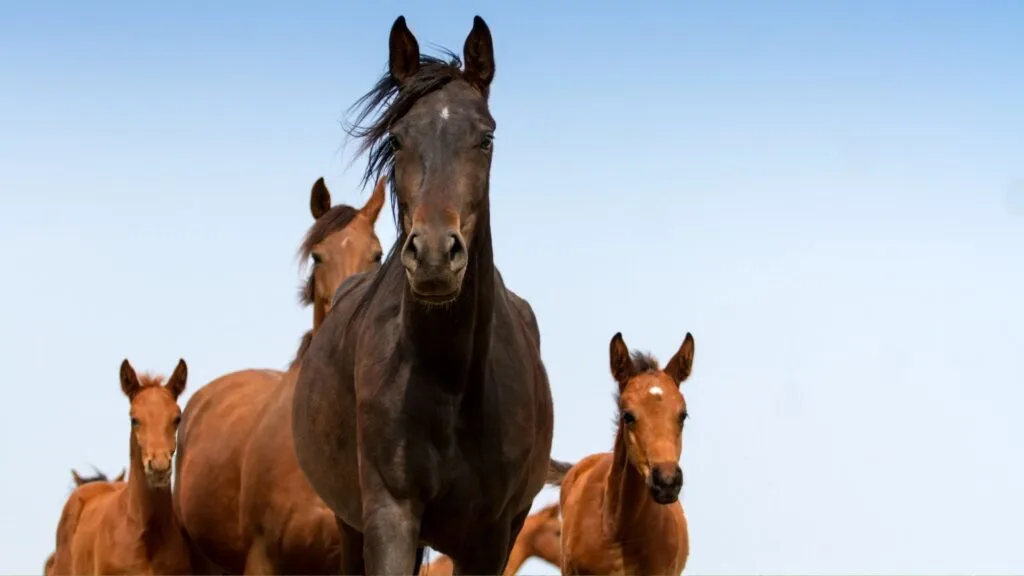
In contrast, mares are generally more cooperative and less aggressive. In a herd, mares typically establish their hierarchy based on their age and experience rather than through physical dominance. However, the lead mare can also be protective and exhibit aggression if necessary to protect the herd or her foal from danger.
While there are general tendencies in the behavior of mares and stallions, each horse is an individual and can exhibit unique behaviors that do not fit into those generalizations. It’s not unusual to come across an aggressive mare or an even-tempered stallion.
As with any animal, it’s important to assess each horse’s behavior individually and respond accordingly. Horses, like people, have their own personalities, and it’s crucial to work with them based on their individual characteristics.
Mating and reproduction behaviors
As you might expect, mares and stallions also have different mating and reproduction behaviors. Stallions are known for their courtship displays, which can include vocalizations, posturing, and even fighting with other males.
Once a mare is in heat, a stallion will typically try to breed with her, often aggressively. Mares, on the other hand, are usually more selective in choosing a mate and may only accept a stallion who meets their criteria. After mating, mares carry their foals for approximately 11 months before giving birth.
Mares and stallions have distinct behavioral differences that are influenced by their gender and biology. By understanding these differences, you’ll be better equipped to work with and care for your horse, whether you’re a seasoned equestrian or just starting out.
Uses and Training of Mares and Stallions
When it comes to working with horses, it’s essential to understand the uses and training techniques for each gender. Mares and stallions have different physical and behavioral characteristics that impact how they are trained and utilized in various settings.
Whether you’re interested in riding and competition, breeding and stud services, or simply handling and training techniques, understanding the uses and training of mares and stallions is crucial.
Riding and competition
As for riding and competition, both male and female horses can be used, but there are differences in their training and handling. Mares are often more patient and less aggressive, making them a good fit for novice riders or those seeking a calmer ride.
However, when mares are in heat, they may become more distracted or agitated, which can affect their performance and behavior. It’s important for riders and handlers to be aware of a mare’s heat cycle and plan accordingly to minimize any potential issues.
Stallions, on the other hand, are often preferred by experienced riders or those looking for a more challenging ride. They are also commonly used in performance events, such as dressage or show jumping, due to their strength, speed, and agility.
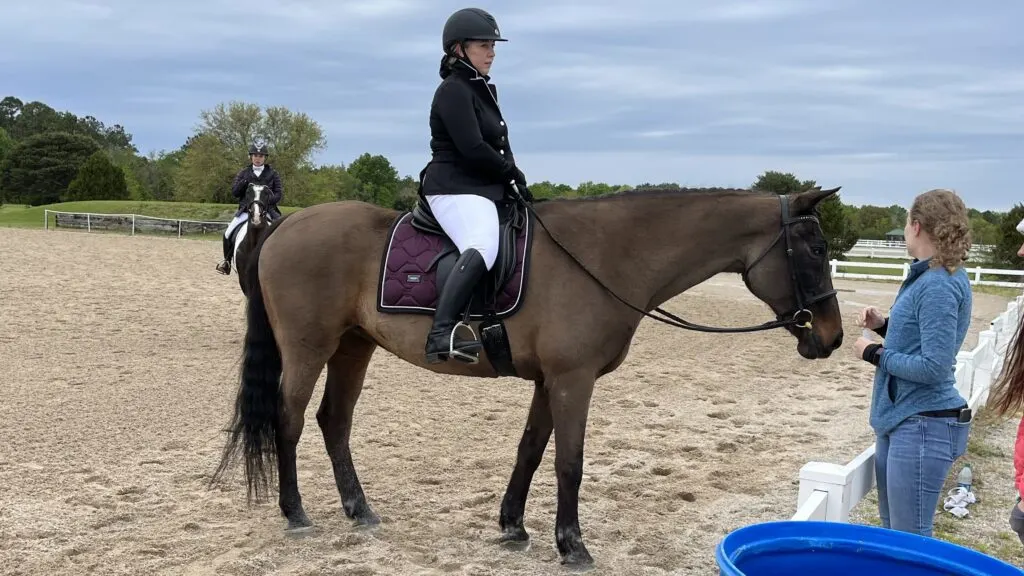
Regardless of gender, it’s crucial to understand the individual horse’s temperament, abilities, and limitations before training or competing with them. With proper training and handling, both mares and stallions can excel in various riding and competition settings.
Breeding and stud services:
Quality stallions are used for breeding and stud services due to their desirable traits, such as strength, speed, and beauty. Breeders often pair them with mares that possess compatible traits to produce offspring with desirable characteristics.
Breeding can be a profitable business for stallion owners, who can charge substantial fees for their stud services. A good broodmare can produce high-selling offspring and be a valuable asset to a breeding program. However, mares are generally not as sought after for breeding purposes as stallions are.
It’s important to note that breeding horses requires significant expertise, resources, and investment. Breeders must carefully select their stallions and mares, monitor their health and fertility, and provide proper care for the foals.
Breeding programs can produce outstanding results, but they also involve a level of risk and uncertainty. As with any aspect of horse care and management, it’s essential to approach breeding with careful planning, research, and consideration.
Handling and training techniques
Understanding gender tendencies is a good starting point when working with horses, but it’s crucial to tailor your approach to each one’s specific temperament and learning style. With patience, consistency, and a deep understanding of the horse’s needs, you can build a strong and lasting bond with any horse, regardless of gender.
In my experience, mares tend to respond well to positive reinforcement and gentle handling. They thrive when they feel safe and comfortable and can quickly pick up on their handler’s mood and energy.
Stallions, on the other hand, often require a firmer hand and stricter training. They can be territorial and aggressive toward other horses, so socialization is critical. It’s essential to introduce them gradually to other horses and monitor their behavior closely.
Stallions may also require more exercise and stimulation to prevent boredom and frustration, as they tend to have higher energy levels and require more mental and physical challenges. Despite these generalities, it’s essential to approach each horse as an individual with unique needs and personalities.
I’ve worked with a variety of horses and know that generalities aren’t always accurate. In fact, I have a stallion right now that is gentle and easy to handle and train.
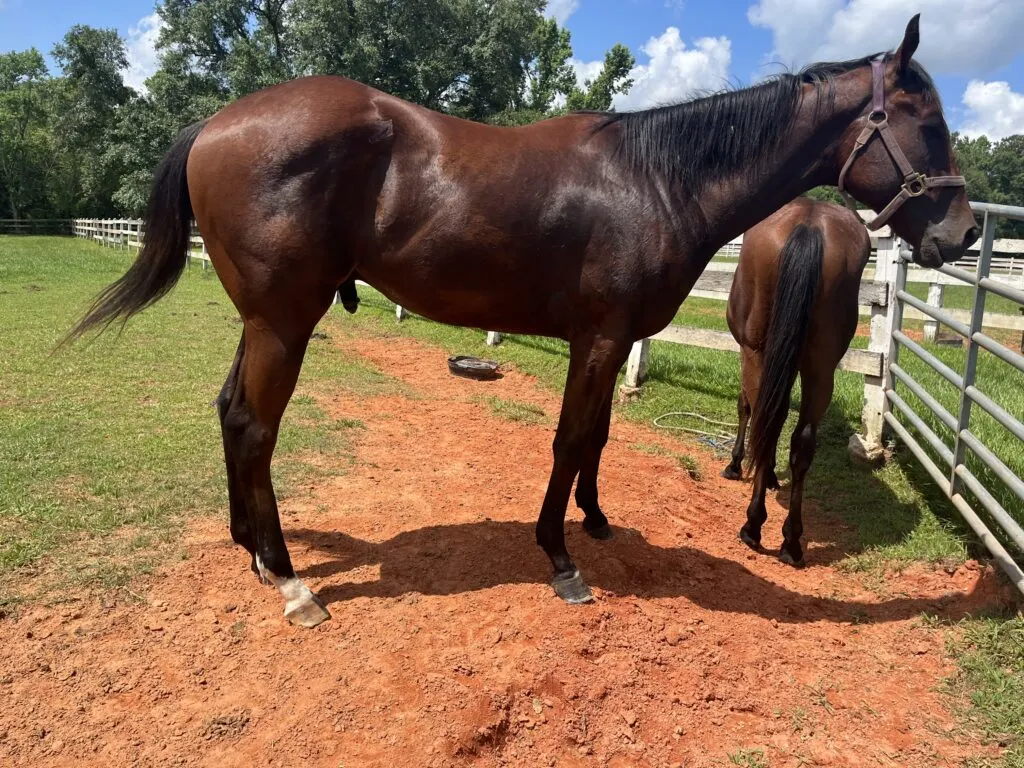
Care and Management of Mares and Stallions
Caring for horses is both rewarding and challenging, as it requires attention to their physical, emotional, and mental needs. When it comes to mares and stallions, there are specific considerations to keep in mind. From their nutrition and feeding to exercise and grooming
Nutrition and feeding
Proper nutrition and feeding are essential for the health and well-being of both mares and stallions. Mares have specific nutritional needs during pregnancy and lactation, and their diet should include adequate amounts of protein, vitamins, and minerals to support the growth and development of their foals.
Stallions, on the other hand, require a diet that provides enough energy to support their high levels of activity and maintain their weight. Both mares and stallions should have access to clean water at all times, and their diet should be adjusted according to their individual needs and activity levels.
Exercise and turnout
Exercise and turnout are important for both mares and stallions, as they help to maintain muscle tone, reduce stress, and prevent boredom. Mares can be turned out with other mares, while stallions are often turned out alone or with a select group of horses to avoid conflicts.
When it comes to exercise, both mares and stallions should be given regular opportunities to move and stretch their legs, whether through riding, lunging, or turnout.
Grooming and health care
The care and grooming of mares and stallions is essential for their overall health and well-being. Grooming helps promote circulation, monitor health, and keep their coat clean and healthy.
Stallions require special attention to their genitals to prevent infections and maintain cleanliness. On the other hand, some mares may require a Caslick’s procedure to prevent health issues like infections, cysts, or infertility. Regular veterinary checkups, vaccinations, and deworming are necessary for both genders to prevent illness and disease.
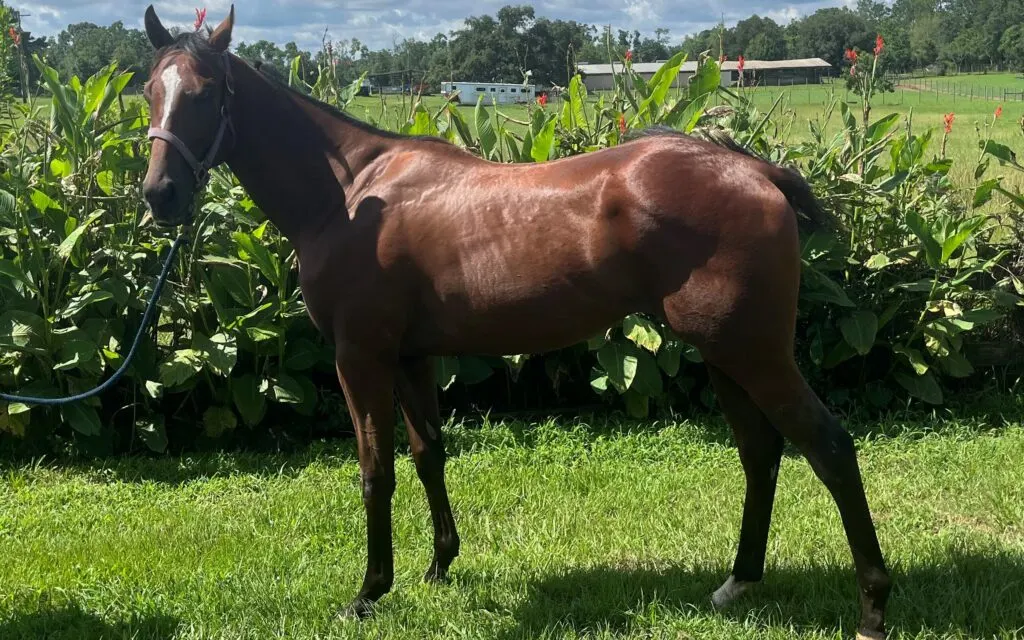
Male Horse Terms: Stallion, Gelding, Colt, and Stud
If you’re new to the world of horses, all jargon can be overwhelming. Even for seasoned horse owners, some words and phrases can be confusing, especially when it comes to male horses. Terms like stallion, gelding, colt, and stud are essential to understanding the different roles and behaviors of male horses.
But what do these terms actually mean? In this section, I provide a clear and straightforward explanation. By the end, you’ll have a solid understanding of the vocabulary and concepts needed to navigate the world of male horses with confidence.
Stallion
A stallion is a male horse that has not been castrated and is capable of breeding. Stallions are often chosen for their desirable traits, such as strength, speed, or beauty, and are paired with mares to produce offspring with these same characteristics.
Stallions can be aggressive and territorial, so they require specialized handling and management. Stallions are often used in performance events, such as dressage or show jumping, due to their strength, speed, and agility.
Gelding
A gelding is a castrated male horse that is unable to breed. Geldings are often used for riding, driving, or other activities that do not involve breeding. They tend to have a calmer temperament than stallions and are often preferred by novice riders or those looking for a more relaxed riding experience.
Colt
A colt is a young male horse that is under five years old and has not been castrated. Colts can be playful and energetic, but they also require specialized handling and training to ensure their safety and well-being. Colts should be handled regularly to socialize them and get them used to human interaction.
Stud
When it comes to male horses used exclusively for breeding purposes, the term “stud” is used. A stud is a male horse that is still capable of breeding. Studs are stallions, as they have not been castrated and still have the ability to reproduce.
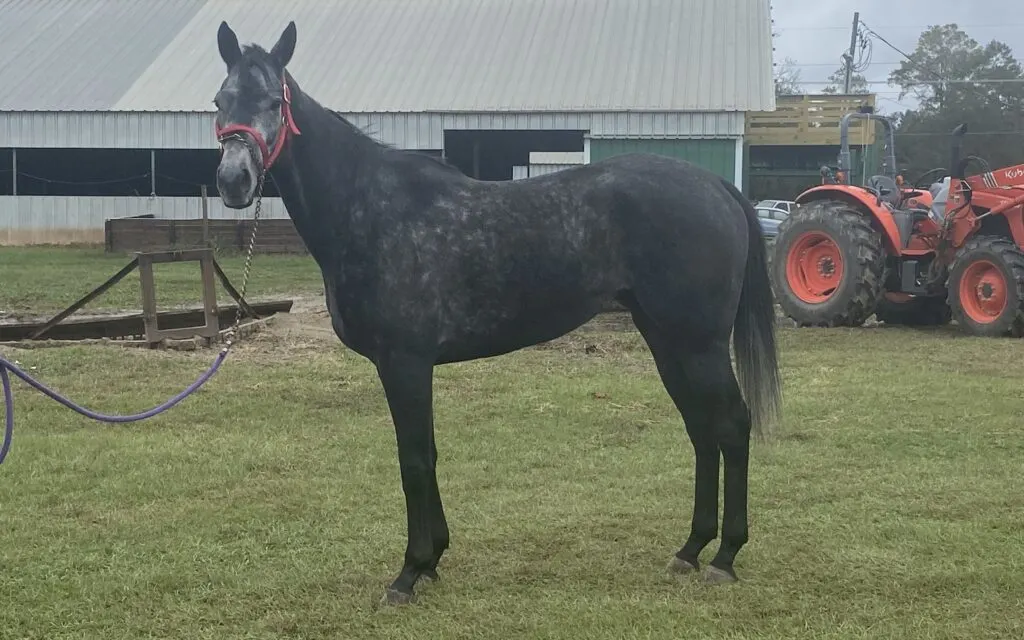
Female Horse Terms: Mare, Filly, and Broodmare
Have you ever wondered what all the different terms for female horses mean? From mares to fillies to broodmares, it can be a lot to keep track of. But understanding these terms is important if you want to work with or care for horses,
Mare
A mare is a female horse that is at least five years old. Mares have specific nutritional needs during pregnancy and lactation, and their diet should include adequate amounts of protein, vitamins, and minerals to support the growth and development of their foals. Mares can be used for riding or driving and can also be used for breeding purposes.
Filly
A filly is a young female horse that is under the age of five years old. They can be playful and energetic and may require specialized handling and training to ensure their safety and well-being. As they mature, fillies can be trained for a variety of riding or driving activities.
Broodmare
A broodmare is a female horse that is used specifically for breeding purposes. Broodmares can be any age but are typically older mares that have a proven record of producing healthy foals. Breeding horses requires careful consideration of genetics and health, so selecting the right broodmare is essential for producing strong and healthy offspring.
Conclusion
Understanding the differences between mares and stallions is essential for anyone who works with or cares for horses. By understanding their unique characteristics and needs, you can provide better care and management for these magnificent animals.
Whether you’re a seasoned equestrian or just starting out, knowing the differences between male and female horses is an important part of being a responsible horse owner or handler. In this article, I covered the differences between male and female horses, with a focus on mares and stallions.
I discussed the physical and behavioral differences between these two genders, as well as their uses and care requirements. I also covered some of the most common gender terms used to describe horses, including stallion, gelding, colt, mare, and filly.
If you’re interested in learning more about horses and their care, there are many resources available. You can check out books and online articles or attend horse-related events and seminars. It’s also a good idea to find a local horse community or organization where you can connect with other horse enthusiasts and learn from their experiences.
FAQS
Are male horses faster than female horses?
The fastest horses in the world include male and female horses. In general, male horses tend to be more muscular and have a higher level of testosterone, which can make them stronger and more powerful than female horses. However, this does not mean that male horses are faster than female horses.
Do mares race against stallions?
Yes, they can, but typically, horse races are divided by gender, with separate races for colts/stallions and fillies/mares. However, there are some races that are open to any horse regardless of gender, allowing both mares and stallions to compete against each other.
